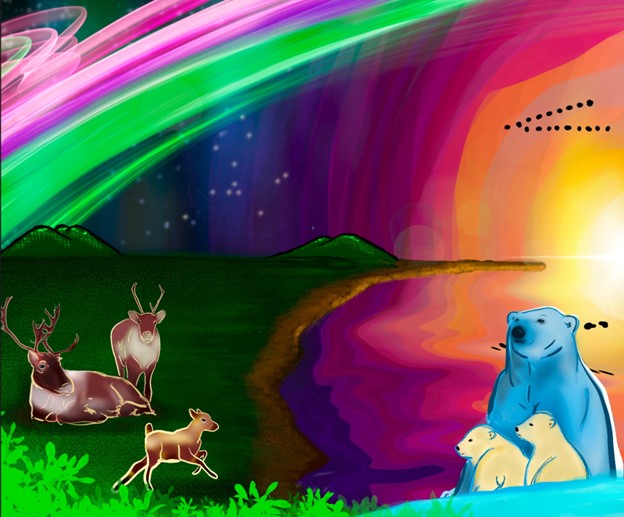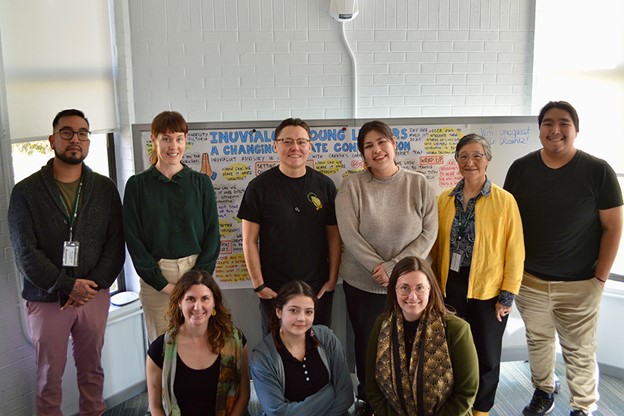In Tuktoyaktuk, climate change impacts are acute, compounding and widespread from melting permafrost, coastal erosion, changing sea ice and weather patterns. Carving out Climate Testimony: Inuit Youth, Wellness & Environmental Stewardship is a CINUK-funded project that supports Inuit youth leaders to enhance wellness and environmental stewardship in their own community of Tuktoyaktuk in the Northwest Territories. The CINUK team comprises settler and Inuit colleagues, from artists to academics across the social and physical sciences and also includes community leaders. The team aims to understand how a changing climate is understood by Inuvialuit youth residents – in their own creative terms.
The key question their project asks: how are unikkausivut (embodied and artful forms of Inuit-storytelling) articulating changing environments? How are various forms of storytelling playing a role in identifying how climate change shapes daily life and futures? One method of storytelling was led by Brian Kowikchuk, artist and Creative Lead of the CINUK project born in Tuktoyaktuk.

The mural above was co-produced with an Inuit Youth Advisory through various participatory workshops in Tuktoyaktuk and Coast Salish territories. The final mural will be 24×20 ft and featured on Mangilaluk School in Tuktoyaktuk. Credit: Brian Kowichuck
As Brian states “the mural speaks to the vibrancy of our land and the family of caribou speaks to our community. The caribou calf welcomes the two cubs, as climate change has taken their mother, and they float to shore on an iceberg that is shaped like their mom. Metaphorically, the calf is welcoming the water, and the cubs are the grieving of the land.”
You can learn more about Brian here, in a podcast celebrating his work.
Climate change impacts are also reflected in the inspiring 2023 music video Don’t Give Up , written and recorded by youth in Tuktoyakuk living with these changes.
The team is also leading a set of climate conversations with various stakeholders. For example, to help inform the next Canada in Changing Climate report, Inuvialuit young leaders invited scientists to participate in a listening capacity to their stories, of which oral testimonies made up only one part. Participatory art collaborations were also used to share knowledge of changing climates. Love of the land, and community, were core themes of the stories they shared.

Inuvialuit young leaders with researchers and Indigenous artist Mo Dawson at the end of the gathering. Pictured (left-right, top-bottom) is Brian Kowichuk, Dr. Jen Bagelman, Mo Dawson, Carmen Kuptana, Dr. Karla Jessen Williamson, Darryl Tedjuk, Maeva Gauthier, Eriel Lugt and Dr. Sara Wiebe. Photo credit: Carmen Koessler
More details about the team’s ongoing work can be found here in their collective storymap.